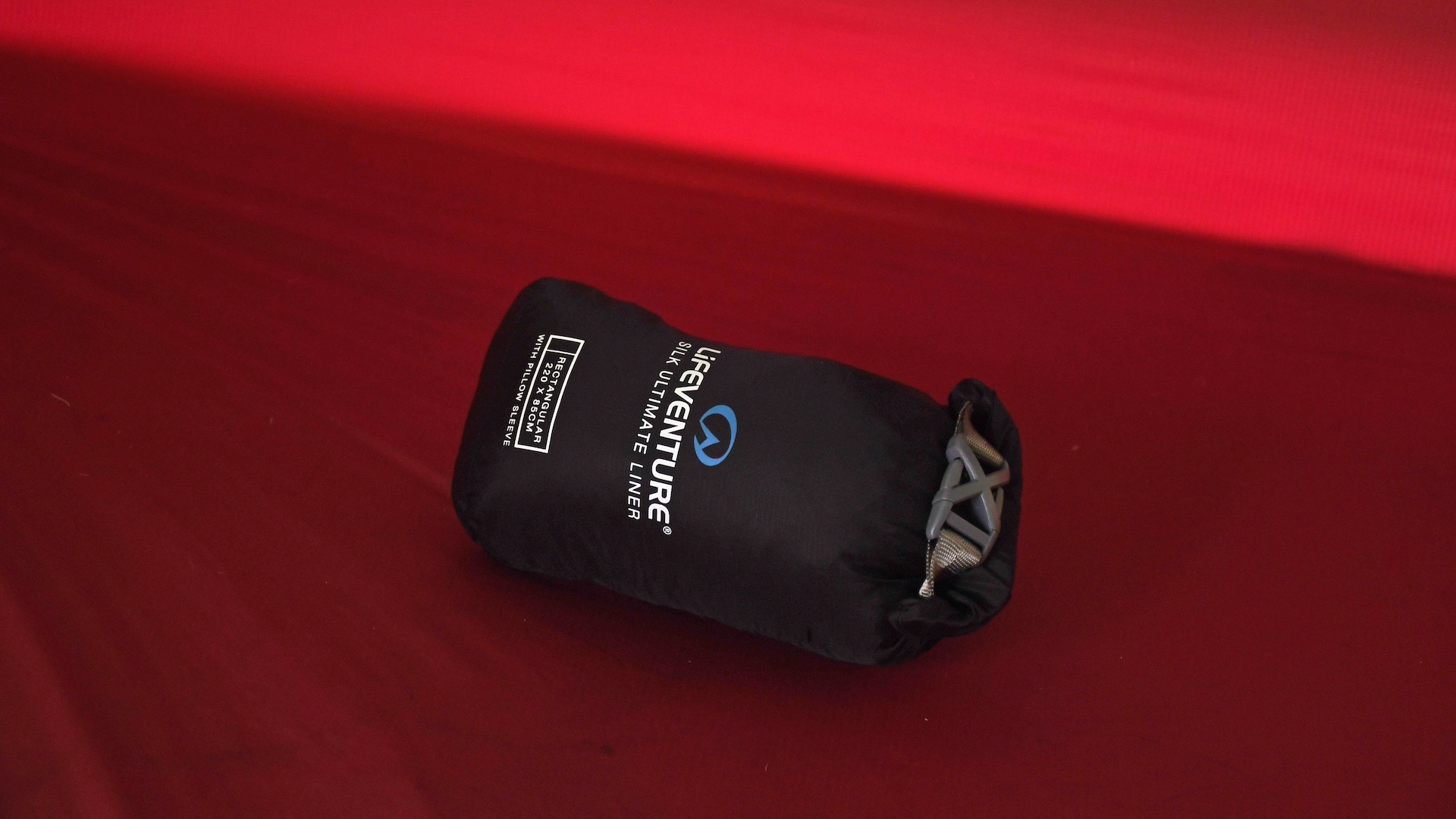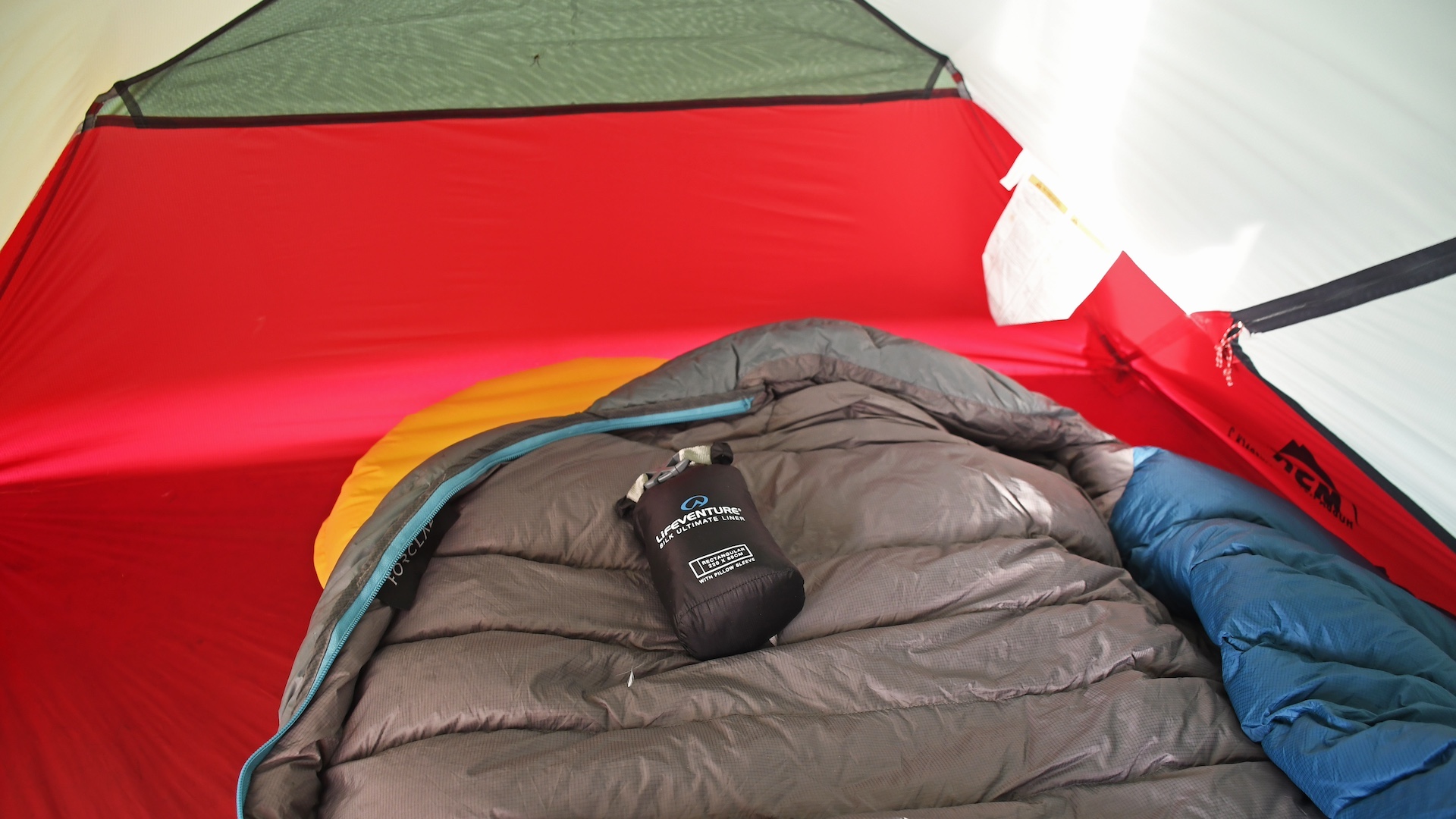Advnture Verdict
This sensationally soft and comfortable silk sleeping bag liner is easy to pack and carry, and punches well above its weight when it comes to trapping warm air and adding several degrees of coziness to camping experiences in fall, winter and early spring. It’s a quiet bed buddy, which wicks moisture brilliantly, breathes easily and works well as a stand-alone cover on warm summer nights. Pricier than other liners, and trickier to launder, it’s a tough piece of kit that should last for many years, and – thanks to its Polygiene treatment – it doesn’t require regular washing.
Pros
- +
Luxuriously smooth next to the skin
- +
Lightweight and packable
- +
Good thermal properties
- +
Wicks moisture
- +
Quiet
- +
Ideal for hot sleepers
- +
Available in mummy and rectangular shape
- +
In-built odor control
- +
Integrated pillow sleeve
- +
Neat packing case
Cons
- -
Can feel chilly at first
- -
Harder to launder
- -
More expensive than cotton liners
- -
One size only
- -
No color choice
You can trust Advnture
Lifeventure Ultimate Silk Liner: first impressions

They look and feel very thin, and are cool to the touch, yet when it comes to choosing sleeping bag liners, the silk ones always seem to be positioned – and certainly priced – as the premium products on market. But are they worth the extra expense?
• List price: $79.99 (US) / £64.99 (UK) / €86 (EU)
• Shape: Rectangular / Mummy
• Weight: 154g / 5.4oz (rectangular); 134g / 4.7oz (mummy)
• Packed size: 14cm x 9cm x 6cm / 5.5in x 3.5in x 2.4in (rectangular); 13cm x 9cm x 6cm / 5.1in x 3.5in x 2.4in (mummy)
• Unpacked size (LxW): 220cm x 85cm / 86.6in x 33.5in (rectangular); 220cm x 85-56cm / 86.6in x 33.5-22in (mummy)
• Material: 100% silk
• Colors: Black
• Compatibility: Camping, hut hiking and traveling
I’ve been testing a Lifeventure cotton sleeping bag liner over the summer, so I was looking forward to finding out the answer to the question above, when I stared testing the British brand’s Ultimate Silk Liner.
There are more advantages to using decent sleeping bag liner than simply adding an extra layer of warmth to your sleeping bag when the weather’s really cold; using a liner also means you don’t need to launder your expensive and difficult-to-wash best sleeping bag as often; liners can also be used as lightweight, stand-alone covers in warm weather; they’re great when you’re staying in hostels or hut hiking (when bed bugs are a concern); and can prove useful in numerous other ways.
But not all sleeping bag liners are born equal – liners are made from a range of materials. The best fabric for you is part personal choice, but it will also depend on where you are, and what the conditions are like.
Lifeventure Ultimate Silk Liner: design and materials

Like its cotton cousin, this silk liner from Lifeventure comes in both mummy and rectangle shapes, so it can be used with virtually all sleeping bags. And again, although you can choose between those two shapes, there are no small-, medium- or extra-large sized liners on offer here, they’re all just large (this will suit most, but not all people – tall campers will struggle to use the integrated pillow).
Since it’s made from 100% silk, this liner is extremely light and packs down very small, into a neat little stuff sack with a fold-over top and an excellent clip (plus a hang loop). As mentioned, the design of the liner includes an integrated pillowcase, so you can keep your camping pillow in place if that’s how you roll, or stuff the space with puffer jackets or fleeces if you prefer to travel light and improvise while on the trail. This pillow envelope acts as a germ guard when you’re staying in hotels, hostels and mountain huts too, using pillows that have seen lots of heads before yours…
Silk isn’t as easy to wash as cotton, but this liner has been treated with Polygiene odor control, so you don’t have to launder it too often (and when you do, use a low temperature).
The Lifeventure Ultimate Silk Liner comes in just the one color (or non-color, to be more accurate): black. Personally, I don’t care about this, since it’s probably the least-on-show piece of kit in your entire pack, but other people might prefer a choice. The design includes a secret passport pouch, so you can stash your valuables close while sleeping when you’re traveling and staying in shared dorms.
Meet the reviewer

Pat has hiked all over the world, his adventures taking him to Mont Blanc, the roof of Western Europe; the Norwegian Alps; the highest peaks in Australia; and New Zealand’s Great Walks – among others. He also spends plenty of nights under canvas to put camping gear to the test.
Lifeventure Ultimate Silk Liner: in the field

I’ve been employing the Silk Ultimate Liner over the last few weeks while bikepacking, backpacking and camping in that weird period when summer segues suddenly into fall, and you go from experiencing sweaty sleepless hot nights in a tent, to waking up at 5am feeling absolutely freezing. This is the time when a good sleeping bag liner is worth its weight in gold.
Silk feels fairly cool to the touch, so if you’re not wearing thermal underwear or a set of base layers when you hit the hay, then climbing into the sack can be a shivery experience at first. However, things soon warm up, and in my experience, despite being a very thin layer, the silk liner does trap warm air in and works well to increase the comfort level of a two-season or three-season sleeping bag during cold nights. The technical properties of silk actually make it an excellent extra layer – it wicks moisture away from your body brilliantly and its fiber density makes it a highly effective insulator, which works even when damp (but do try and keep it dry, obviously).
Like all silk liners, it is extremely light to carry, and it takes up very little room (factors that convinced me it was worth taking on escapades when I was traveling with as little gear as possible, especially when choosing what to take bikepacking). Silk is a tough material too, and unlike the cotton liner, I didn’t think it was going to tear.
The main benefit of silk, though, is its lovely, luxurious feel (silk boasts the lowest levels of friction and irritation of all fibers). It’s super soft and smooth, doesn’t cling or make any noise when you toss and turn and it breathes beautifully.
As good as it is at providing thermal protection during fall, winter and spring camping adventures, I’m actually looking forward most to using it as a standalone sheet for summer sleepouts.

Author of Caving, Canyoning, Coasteering…, a recently released book about all kinds of outdoor adventures around Britain, Pat has spent 20 years pursuing stories involving boots, bikes, boats, beers and bruises. En route he’s canoed Canada’s Yukon River, climbed Mont Blanc and Kilimanjaro, skied and mountain biked through the Norwegian Alps, run an ultra across the roof of Mauritius, and set short-lived records for trail-running Australia’s highest peaks and New Zealand’s Great Walks. He’s authored walking guides to Devon and Dorset, and once wrote a whole book about Toilets for Lonely Planet. Follow Pat’s escapades on Strava here and Instagram here.

